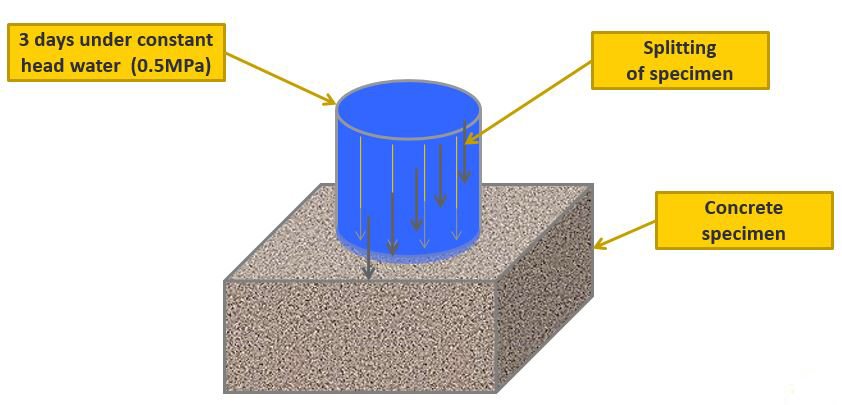 Water permeability test determines the resistance of concrete against water under hydrostatic pressure.
Water permeability test determines the resistance of concrete against water under hydrostatic pressure.
Over the past couple of weeks we have been going over a number of different methods to use for durability testing. The first was the absorption test, which gives a good result, yet could be better. The Rapid Chloride Permeability test is another used with wide popularity because it is quick and easy to execute; however, does give unreliable and unrealistic results.
The 3rd and most accurate way of testing for all important durability is the water permeability test. As stated in the first post on durability testing, the relationship between permeability and durability allows the durability of a mix to be determined by testing the permeability of the mix in question. Therefore, the water permeability test determines the true resistance of concrete against the penetration of water under hydrostatic pressure.
This permeability test should be considered the dominant test to evaluate the case whereby concrete is subjected to hydrostatic pressure.
After the allotted three days they are removed from the apparatus and cracked vertically to determine the depth of water penetration. The smaller the depth of penetration results in a higher resistance to water pressure. However, like the other tests, some limitations arise:
- For a dense and low-permeable mix, the depth of water penetration is low, making it difficult to compare the mixes that have low permeation; and
- This method should only be used as an auxiliary method for cases not under hydrostatic pressure – the absorption test should be used.
Still, the water permeability tests are the best for evaluating concrete durability under hydrostatic pressure.
In all, concrete permeability is a good indicator of its quality and durability, but more is needed to determine an accurate calculation. That said, the focus of testing for durability should put the most weight on determining concrete’s permeability, resistance to environmental factors, and tendency to crack.






